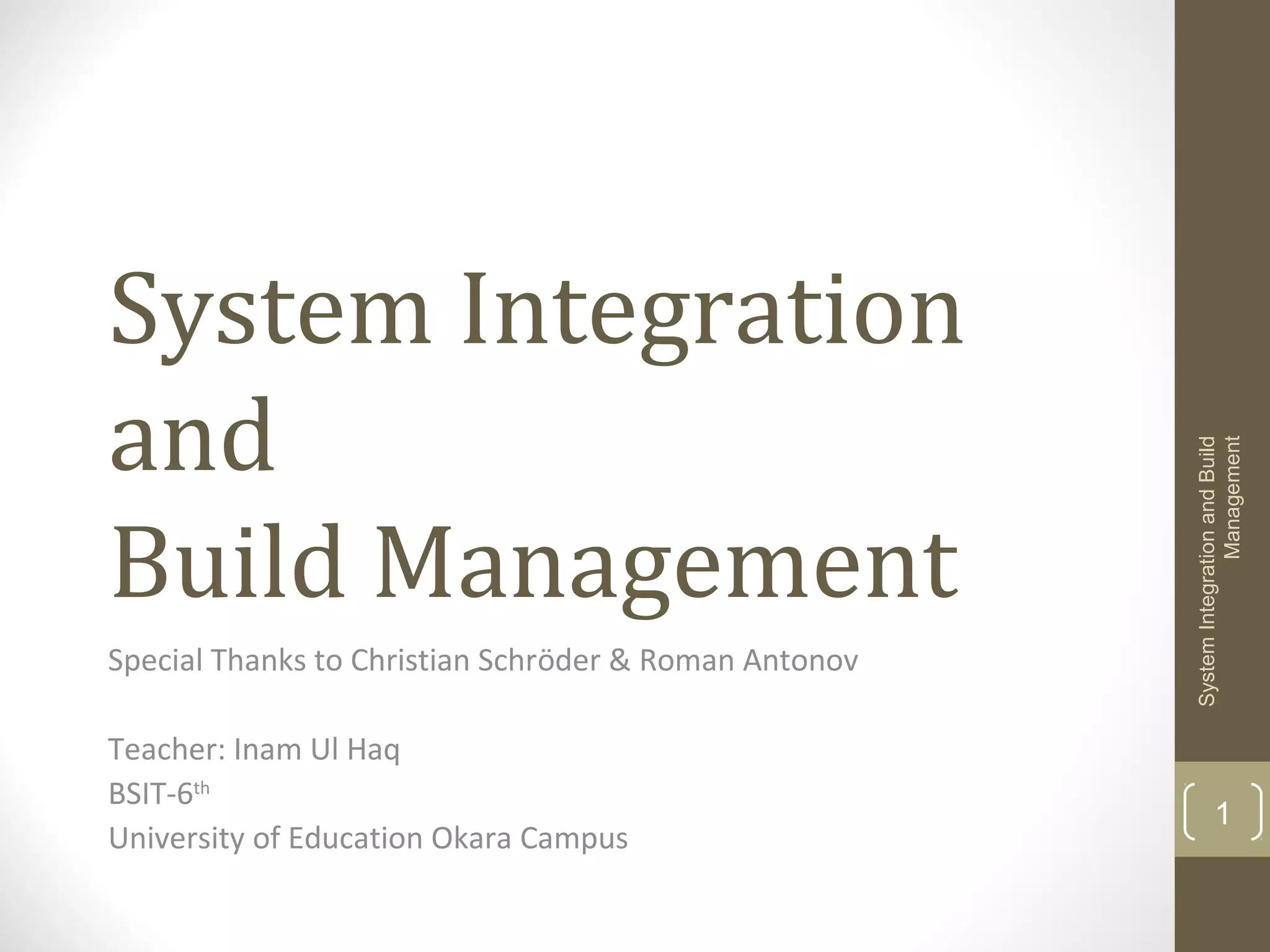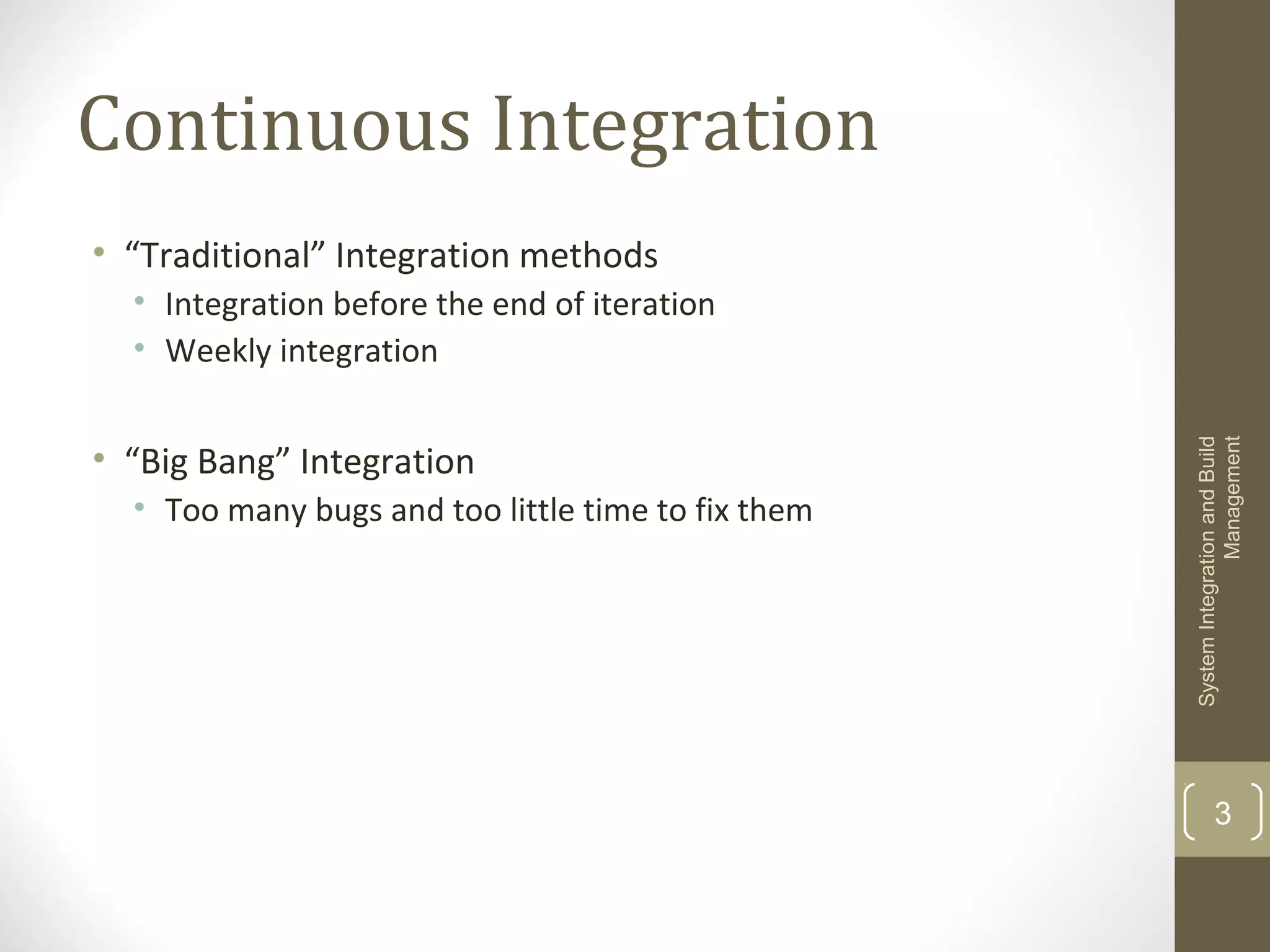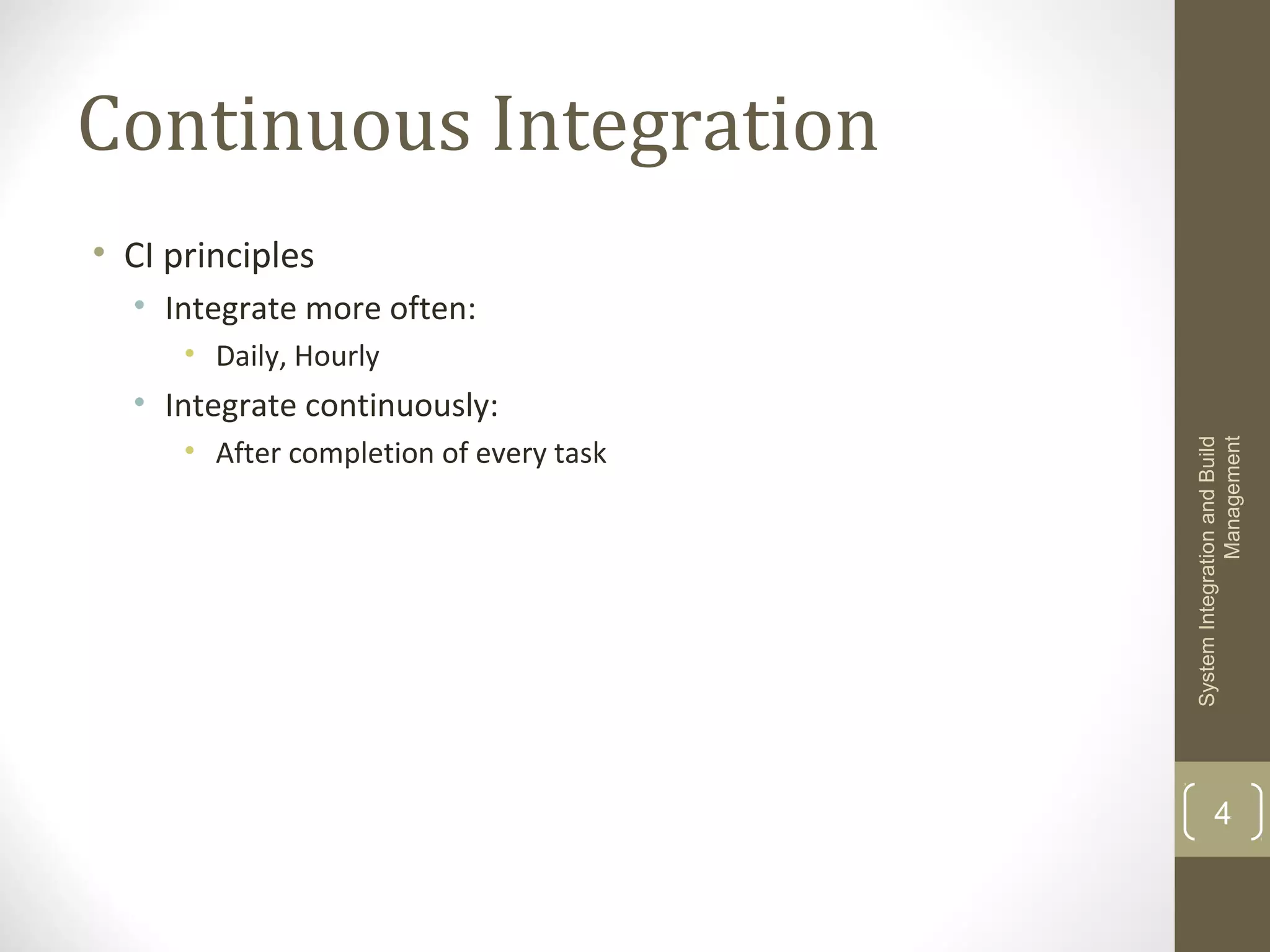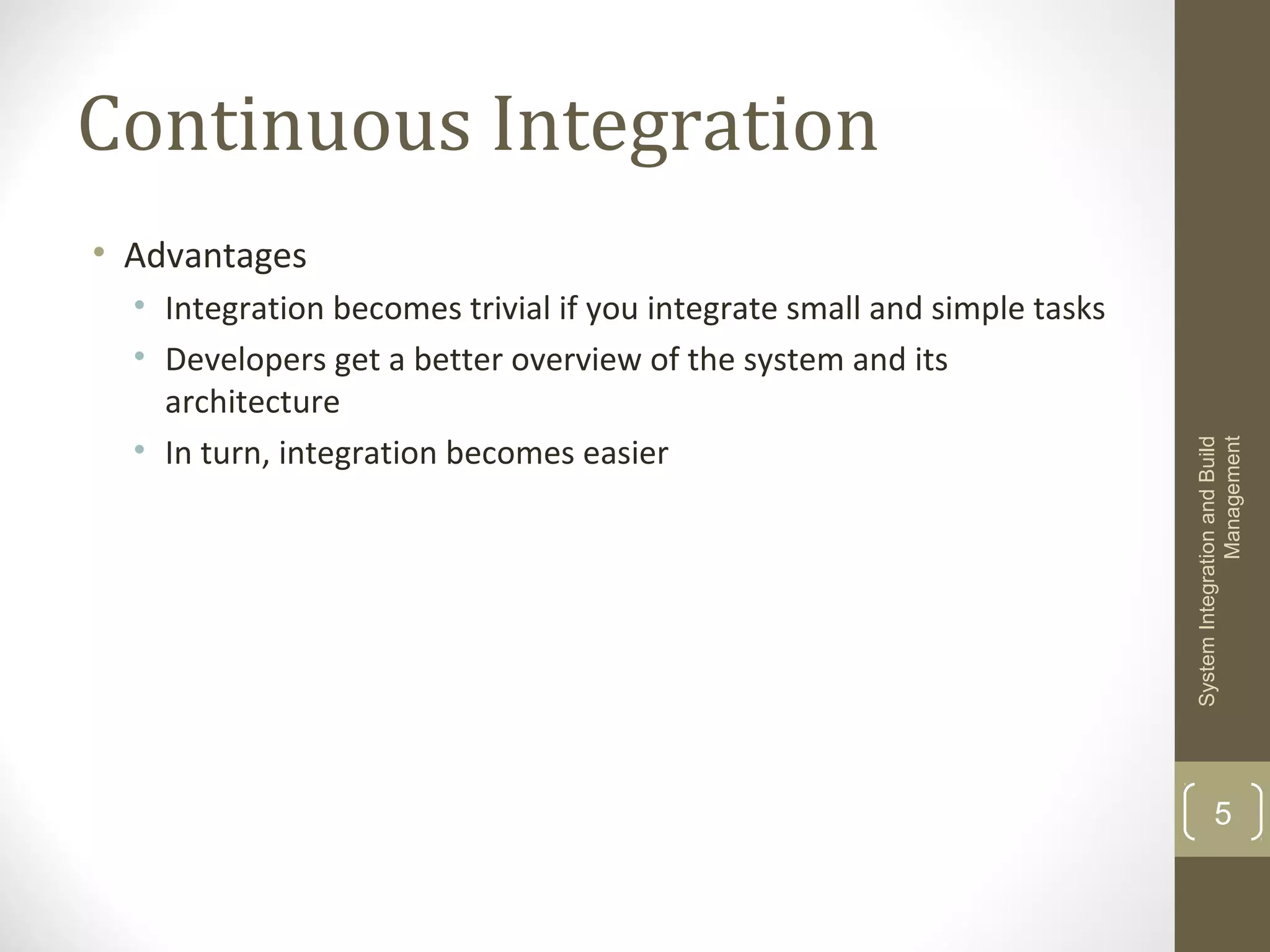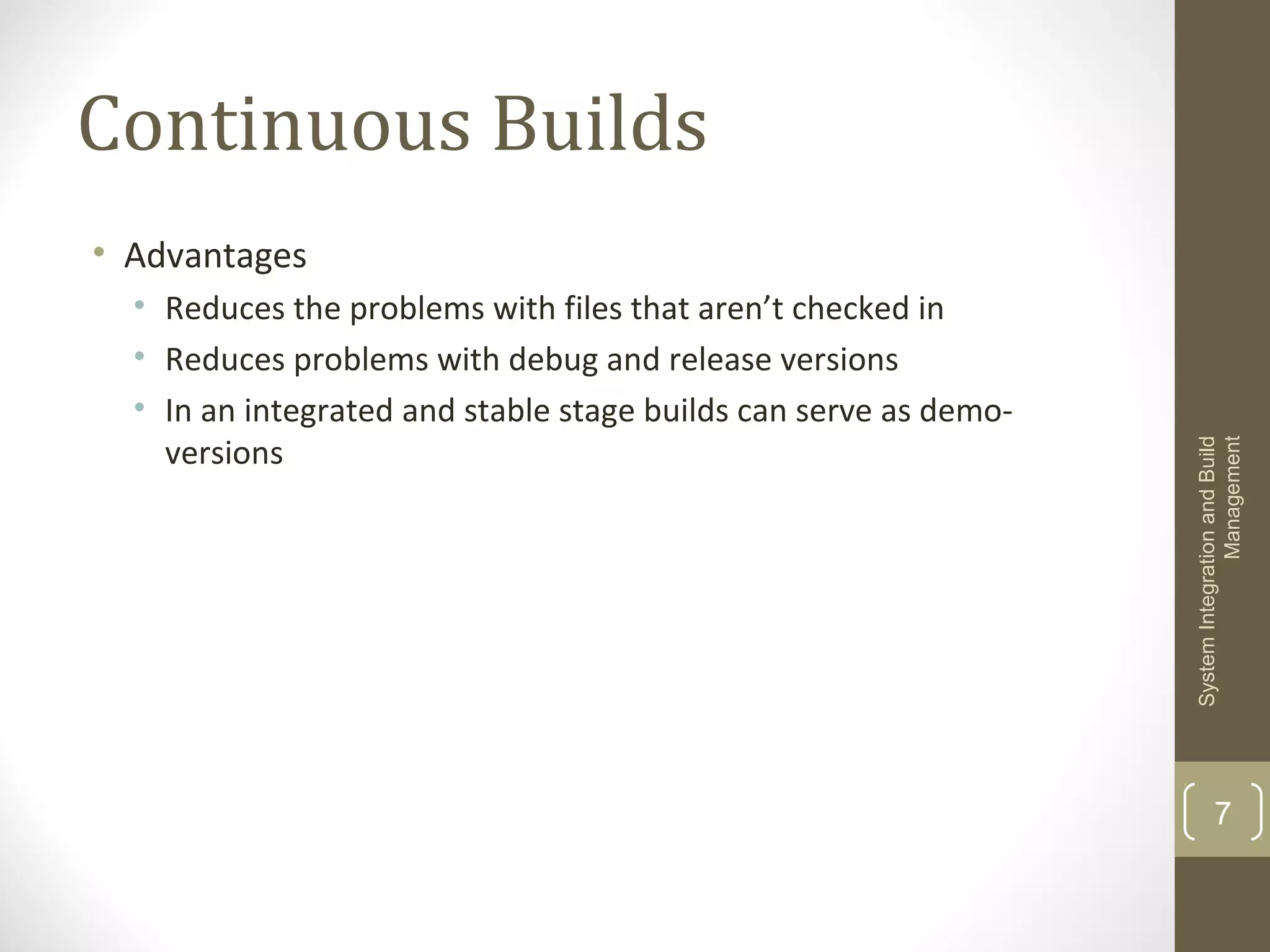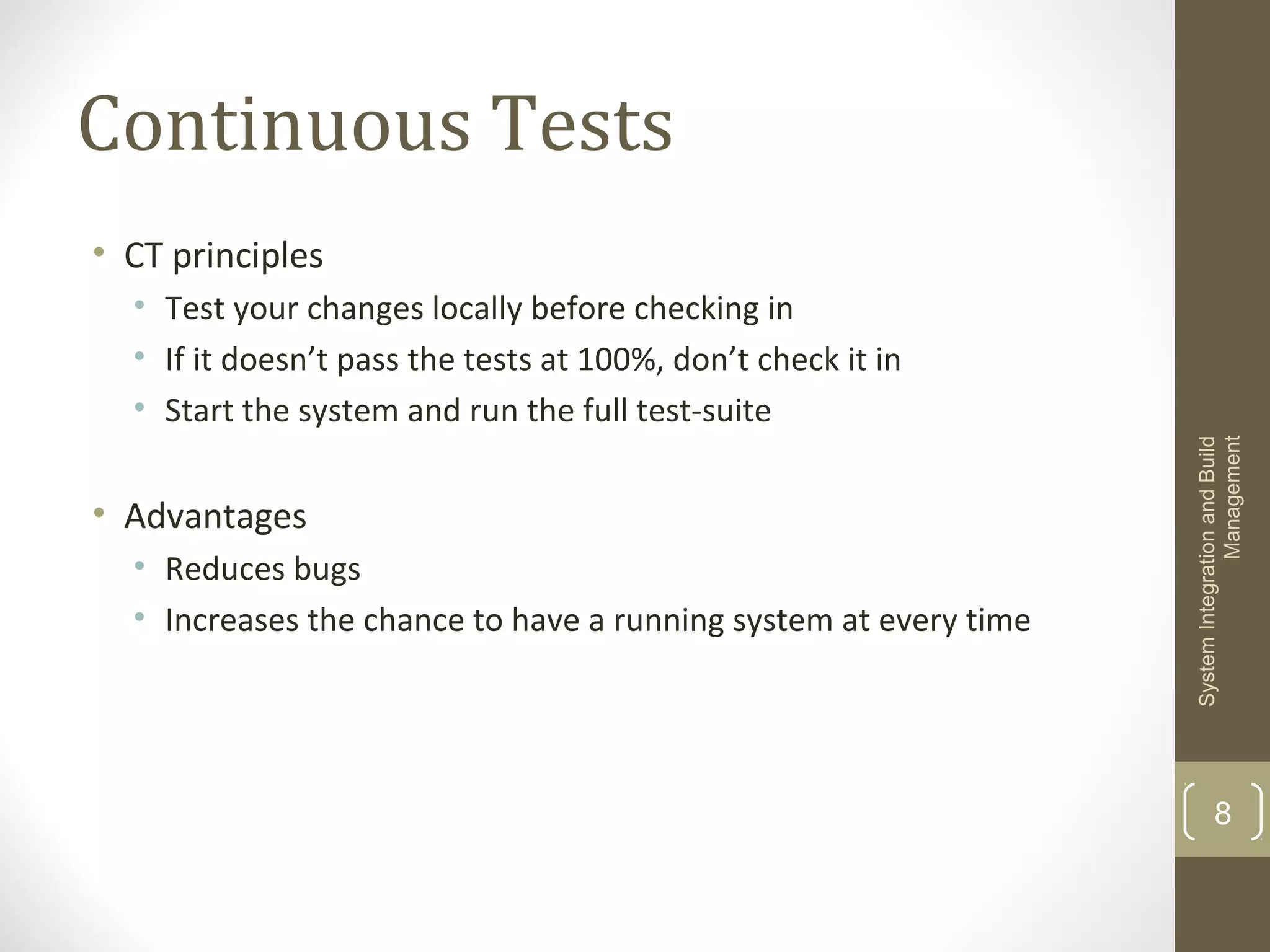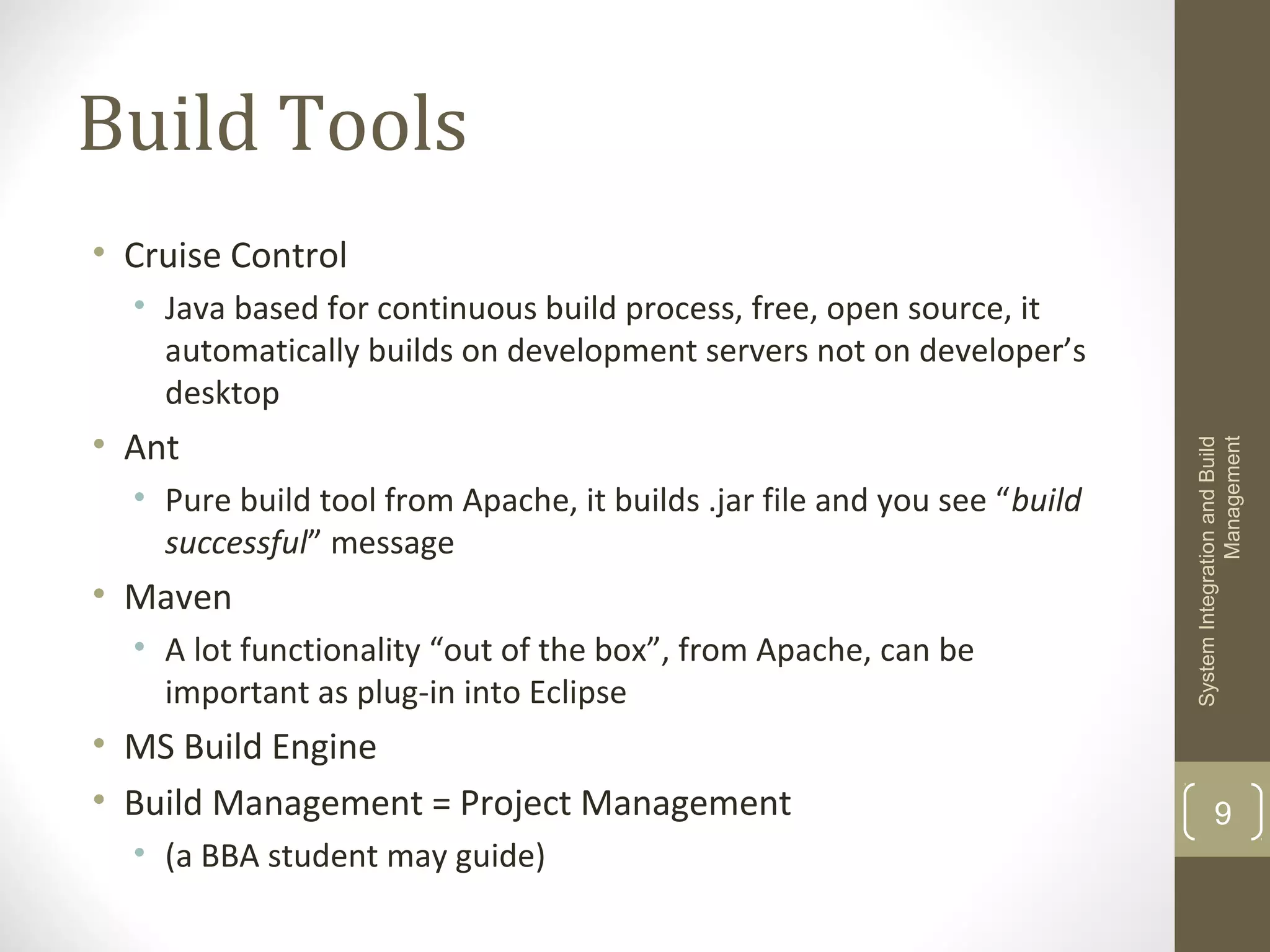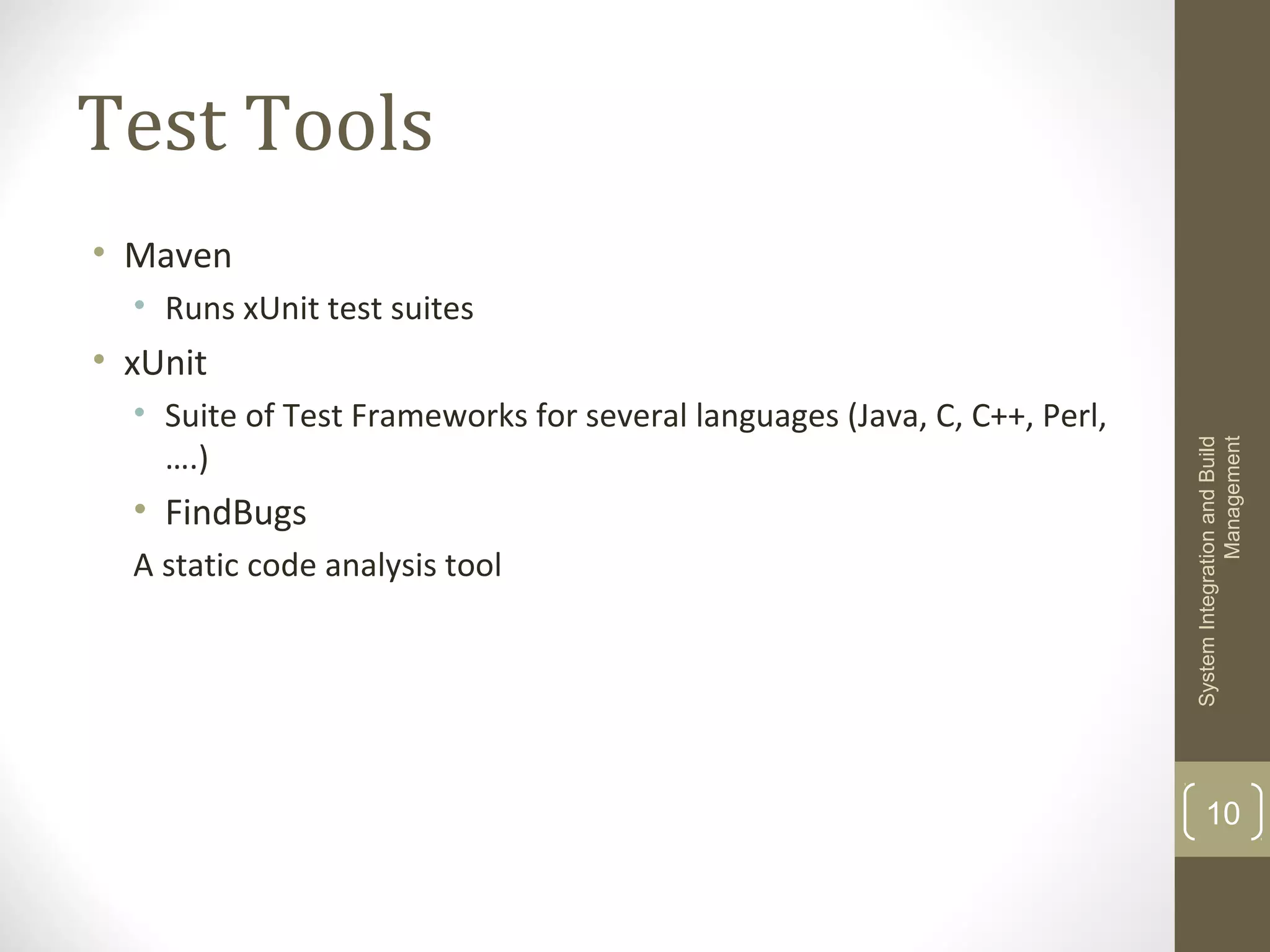This document discusses continuous integration, builds, and testing. It describes integrating code more frequently, such as daily or hourly, to make integration easier. Continuous builds involve building all code locally before check-in and building the entire system from scratch on a dedicated server. Continuous testing principles are to test code locally at 100% before check-in. Tools mentioned include Cruise Control, Ant, Maven, MS Build, xUnit, FindBugs, Subversion, and CVS.
